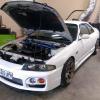R33 Rb30 Conversion
Announcements
-
Similar Content
-
Latest Posts
-
By Murray_Calavera · Posted
I'm guessing you mean something like this size? https://www.supercheapauto.com.au/p/bodyworx-bodyworx-hard-soft-sanding-block---70-x-135mm/594184.html?cgid=SCA01100303#srsltid=AfmBOoq_qZTEe3boann9BaHiB2f59dxJlosWLzCr0zm_weHgUlDX-N5f&start=6 Are they sanded completely flat? -
Just a standard sanding block size. With the rock chipa they are quite small. I sanded them as you could feel the edges.
-
By Murray_Calavera · Posted
Say you've just laid all your filler and your about to start sanding, how large is the sanding block your using? Like a high fill primer? Technically possible but would be a nightmare. Just guessing from the photo, but they look small enough that you might get away with using a 1k spot putty. Normally you'd use something like this on pinholes but with the type of project you're working on I'd give it a go.








Recommended Posts
Create an account or sign in to comment
You need to be a member in order to leave a comment
Create an account
Sign up for a new account in our community. It's easy!
Register a new accountSign in
Already have an account? Sign in here.
Sign In Now